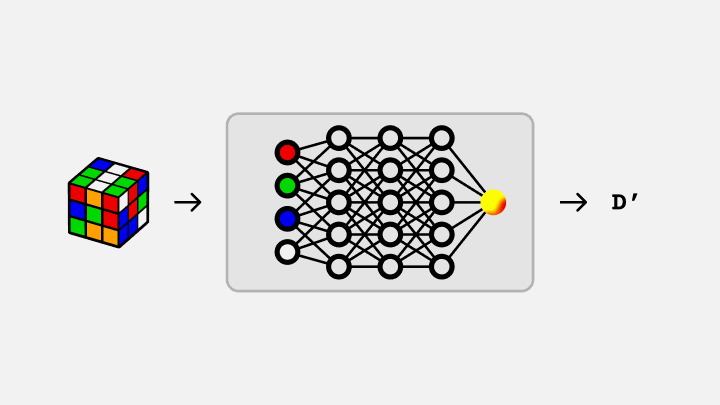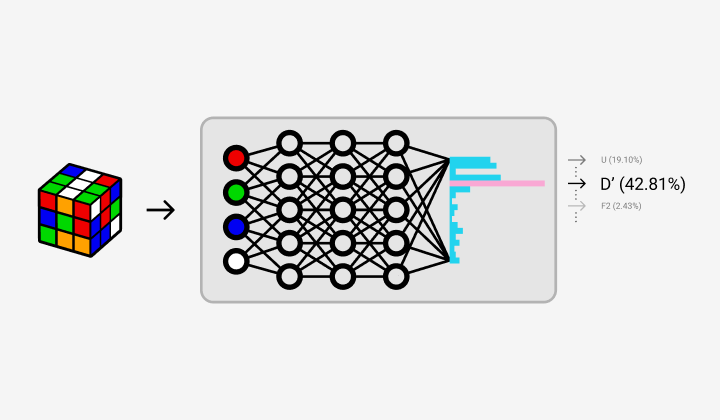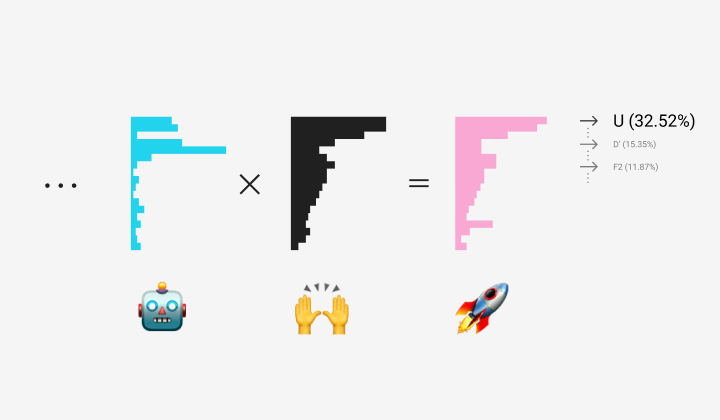How It Works
AlphaCube builds upon the deep learning method from EfficientCube (TMLR'23), introducing features for a more flexible and powerful solving experience.
Key features include:
- A smooth trade-off between speed and quality, controlled by adjusting the search width.
- Ergonomic solving, which biases the search to find solutions that are faster for human hands to execute.
These features are made possible by the probabilistic nature of the underlying method.
The Core Method: EfficientCube
At its heart, AlphaCube uses a Deep Neural Network (DNN) trained to predict the likelihood of moves taking a scrambled cude closer to the solved state. The solver sequentially applies the best moves to find a solution.

Under the hood, instead of picking just one move, the DNN outputs a probability distribution over all possible next moves, evaluating the quality of every candidate.

Using these probabilities, the solver employs a beam search algorithm to explore a limited set of the most promising move sequences. By adjusting the beam_width parameter, you control how many sequences are explored, allowing you to trade computation time for shorter, higher-quality solutions.
Speed-Optimal Solutions
Leveraging the probabilistic core, AlphaCube can find solutions that are not just short, but also ergonomic. This is achieved by applying an ergonomic bias.
By providing a dictionary of move preferences (ergonomic_bias), you define a sort of desirability distribution. The solver combines this with the model's predicted probabilities, skewing the search to favor moves that are both near-optimal and easy to perform, leading to minimal execution time.

This reframes the search as finding the shortest path on a weighted graph, where edge weights represent their ease of execution. By tuning the bias to your preference, you get solutions that are not just efficient but are truly optimized for your fingers.